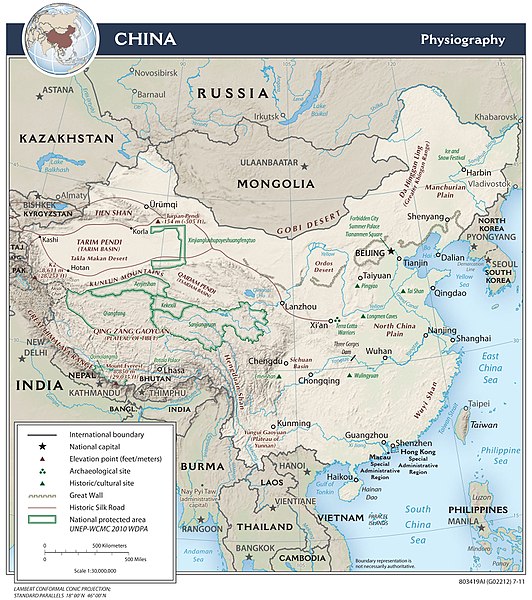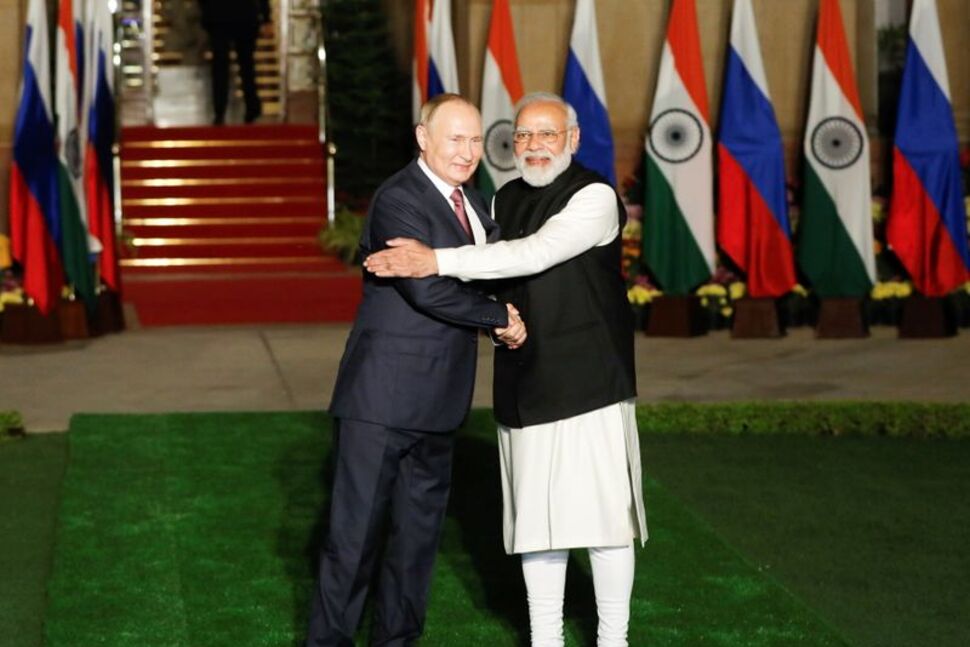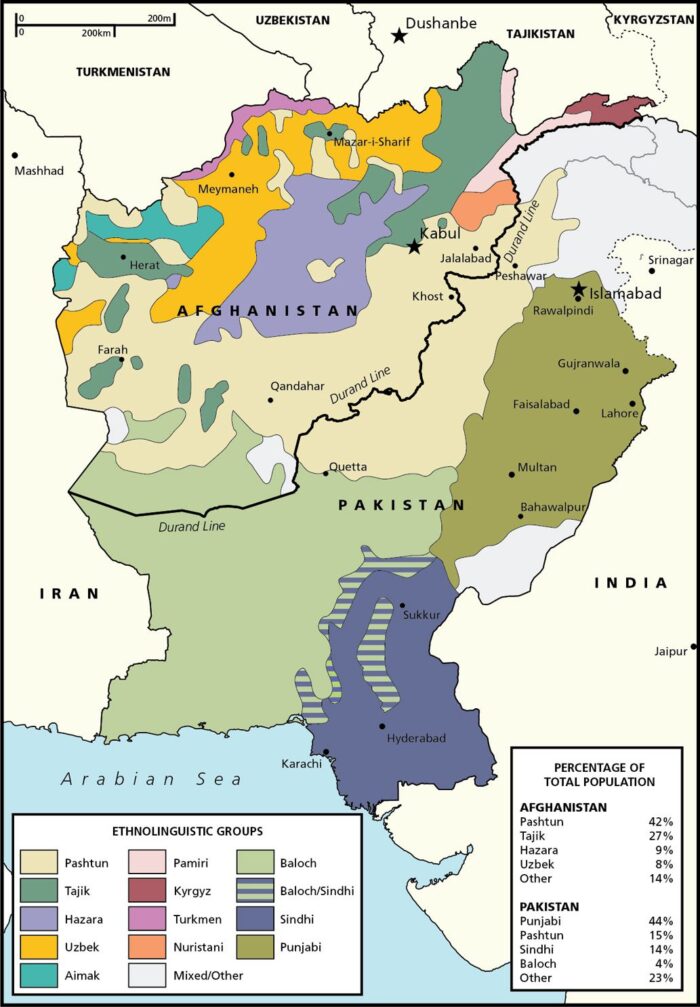Think back to the last couple of years of the Obama Administration when antipathy to Russia almost forced Russia to consider an alliance-type relationship with China. While that has happened to a certain, mainly visual, degree, we have generally been skeptical about the depth of the Russia-China relationship.
As strategists have taught for at least 2,300 years, neighbors really don’t make allies. And Russia-China have a 2,600 mile long border with a history of battles that involved gain-loss of boundary areas. Secondly, the disparity between China & Russia is widening at an alarming speed, as the world and both countries see. China today sees itself as a global power virtually on par with America while Russia, to President Xi, is at best a junior regional power. And we all know how President Xi treats junior powers in its orbit.
So we have been waiting for a visible signal from Putin to Xi, a signal that can be read by the entire World. Putin’s Russia has been sending a few early signals since the summer of 2020 but they could have been discounted as basic commerce. Now we have all seen the visible almost dramatic signal early this past month, a signal from Putin himself, a signal that sidelined even Lavrov, his veteran foreign minister.
While this process was developing for over a year, the catalyst for the timing, we believe was this past summer’s sudden & stunning exit of U.S. forces and the handover of Afghanistan to the Taleban.
1. Russia vs. or with China
Read what Elizabeth Wishnick, a professor & a Indo-Pacific research scientist wrote on November 8, 2021 in her article on War on the Rocks:
- “Recently Alexander Lukin, a longtime scholar of the Sino-Russian relationship, argued that the partnership between China and Russia may have reached its peak.”
Peaks in Geopolitical relationships, like peaks in Macro Markets, are significant events, events that force analysts & participants to increase/decrease their exposures & future paths. So what suggests a “peak” in the China-Russia quasi-alliance and how do we measure the direction of this critical geo-strategic relationship?
Ms. Wsihnick addresses this in her article:
- “The changing circumstances in Afghanistan certainly will provide a new stress test for the partnership. … Putin and Xi view Afghanistan from different vantage points, making their coordination improbable….How Russia and China address India’s role — and their own — in regional security and navigate the recognition of the Taliban as they each pursue their own regional agendas will provide key indicators of the parameters of future Sino-Russian coordination.”
Take a look at the map below of the China-Russia border, especially the Central Asian region on the left where the new & increasing reach of China meets the existing influence of Russia.
Notice that Russian influence in Central Asian states, Chinese Xinjiang, China’s entry into NaPak-occupied Kashmir & Indian outreach all meet in the land called Afghanistan. The American control of Afghanistan had kept this pot of regional influences dormant. Now it is beginning to stir.
How do Russian & Chinese ideas differ re Afghanistan? Ms. Wsihnick writes,
- “Russia is engaging more with India on regional security, is cautious about recognizing the Taliban, and seeks to maintain its role as the primary security partner for Central Asia. This contrasts with China’s efforts to exclude India, increase its role in Central Asian security, and engage with Taliban in the interest of preventing security threats to Xinjiang.”
This to Ms. Wsihnick is a real litmus test:
- “Next, Russian engagement with India in Central Asia and Afghanistan will show which partnership — the Sino-Russian partnership or Russia’s longstanding relationship with India — takes pride of place and how Russia copes with their competing demands.”
That was on November 8, 2021. Did Putin himself provide an answer in December?
2. Putin’s message to Xi?
Look back to May 2020 when Indian & Chinese forces fought in a skirmish in which 20 Indian soldiers & reportedly 40-45 Chinese soldiers died. As a result, tens of thousands of troops were mobilized & positioned across the Himalayan border with air forces & missile batteries activated.
At that time, Indian Defense Minister Rajnath Singh visited Moscow ostensibly to participate in the 75th anniversary of WWII victory. During that visit, Mr. Singh reportedly gave the Russians a list of 10 pieces of military equipment that India needed to fight the Chinese Army. That was the time when President Trump & PM Modi had built a strong relationship & while Russia & China were partners.
Yet, the Russians delivered on the entire list against Chinese protests. Yes, the Russians delivered weapons to India that would be used against Chinese Army to thwart Chinese goals. That was a big signal to India that Russia was not going to sacrifice the Indian relationship to placate China.
Fast forward to December 2021 and see President Putin fly to Delhi to meet with Prime Minister Modi and sign a series of agreements. Note that Putin has not met Xi since the Covid outbreak. In fact, the only foreign trip of President Putin has been to meet President Biden in Geneva.
But these agreements could easily have been signed by Foreign Ministers Lavrov & JaiShanker. President Putin did not have to fly for that? So why did he?
One reason, according to Russian analysts who spoke off the record with veteran reporter Jyoti Malhotra, is that Putin wanted to meet Modi to understand for himself the direction in which India’s foreign policy was moving. She points out that the two foreign ministers, Lavrov & JaiShanker, have not been able to establish chemistry and that Lavrov & his team had been condescending towards India.
Malhotra argued in her article on December 6, 2021,
- “Putin, however, realizes that India’s size, economy, independent-minded foreign policy and democracy are far too important for Russia or any country to ignore. Moreover, Modi is a powerful prime minister and Putin recognizes power.”
In her opinion,
- “That is why the Russian president’s visit this week is such an interesting moment. It comes at a time when geopolitical friendships are in a state of flux. As middling powers, both India and Russia recognize that. They also recognize their values for each other. Despite all the surrounding noise, Putin and Modi are not about to loosen their very special embrace.”
Her conclusion:
- Russian President Vladimir Putin’s visit to New Delhi today is a defining moment in the India-Russia relationship. Make no mistake, this encounter with Prime Minister Narendra Modi will set the direction of the bilateral relationship in the years to come.
What about Xi? Malhotra writes:
- “The third important reason for Putin’s visit, is that it is a signal to none other than Xi Jinping. As a former Communist who cut his teeth in the Soviet intelligence agency — the KGB — Putin understands well the manner in which his current Communist comrade thinks about the world. … For Putin, to visit India at a time when Indian and Chinese troops are facing off on the LAC is certainly a telling message to Xi Jinping.”
Notice that, within days of Putin returning home, Prime Minister Modi Modi participated in a virtual Democracy Summit called by President Biden, to which neither Putin nor China’s president Xi Jinping were invited.
It shows that the world is becoming a more multi-lateral arena in 2022. India is a major partner of America in the big challenge ahead from China. At the same time, India is signaling that it remains a partner of Russia in keeping Chinese influence from spreading in Central Asia. And that begins in Afghanistan & more importantly in NaPakistan.
3. Former Terrorists, Now Nationalists?
Speaking of terrorism-friendly NaPakistan, remember the ethno-linguistic map of that “land of the spiritually pure“?
The “Pashtun” section in yellow shows clearly how the British partitioned Pashtun territory into two parts by creating an artificial border called the Durand Line. When they went away, the British left behind the Durand line as the “border” between today’s NaPakistan & today’s Afghanistan. NaPakistan never respected this “border” & kept infiltrating fighters into Afghanistan, first to fight the Soviet occupation and then the American occupation.
For their part, no Afghan government has accepted the Durand line as their border with NaPakistan. And the Taleban demonstrated this week that they also do NOT accept the Durand line as the border of their state of Afghanistan. And that they intend to keep going back and forth between today’s Afghanistan & the Pashtun areas occupied by today’s NaPakistan.
The videoclip below shows that the Taliban fighters dismantled the fencing put up by Napaki forces to demarcate the Durand line. This actually led to a skirmish with Napaki forces. Guess the Taleban might have been created & nurtured by the Napaki military but they have been Pashtun nationalists first.
Now go back about five weeks to the regional conference of National Security Advisors organized by India to discuss the situation in Afghanistan:
- The meeting, chaired by the Indian NSA, was attended by Iran’s supreme national security council secretary, Rear Admiral Ali Shamkhani, Russia’s security council secretary Nikolai Patrushev, and the security council heads of Kazakhstan, Kyrgyzstan, Tajikistan, Turkmenistan and Uzbekistan.
Notice who is missing? The NSAs of China & NaPakistan! The Taliban leadership was NOT invited because India does not recognize the Taliban. So the Taliban must have been livid, right? Guess again & watch the clip below.
Specifically read the statement about this conference from Zabihullah Mujahid, Taliban Spokesperson:
- “We firmly believe that this conference is in the better interest of Afghanistan as the entire region is considerate of the current Afghan situation and the participating countries must be thoughtful of improving and safeguarding the security situation in Afghanistan and helping the government to ensure security in the country on its own“.
“On its own” meaning NaPakistan stay away & China don’t exploit our mineral resources? How will the Biden administration act? Will they stay away & leave it to Afghanistan’s neighbors or will they get tempted to re-enter in a new war against terror in Afghanistan by re-funding old friends in the NaPakistani military? Who knows?
The real message might be that the story of the aftermath of US withdrawal from Afghanistan is merely beginning to be written.
4. A Bigger Change in the offing in 2022?
The above was an exercise in positive thinking about the future. Now to today’s stark reality. A reality that America has forgotten about the lesson from the great FDR. It was the smart pragmatic & cold realistic genius of President Delano Roosevelt that won World War II against the enormous might of Nazi Germany.
FDR had no illusions about Stalin & his Russia. But he understood that Stalin was the smaller enemy while Hitler was the Big Enemy. A battle with Stalin was not existential for US supremacy but the war against Hitler was. Had Hitler won, America would have been cast out of Europe & could possibly have lost the Atlantic Ocean to Germany. Compared to this, the challenge from Stalin was trivial. FDR also understood that having Stalin’s Russia fight a battle against Hitler’s Germany was a huge blessing for America. That is why FDR sent all supplies & war material Stalin needed.
FDR’s party is in power now but there is no sign of FDR. Actually there is every sign that FDR’s successors among Biden-Dems are the complete opposite of FDR.
America’s existential battle today is against China, a true global superpower in the making. If China succeeds, America will be cast out of the Southern Pacific Ocean & instantly become a 2nd-rate power. The entire thriving ASEAN region will become a Chinese vassal state & its reach will extend across to Middle East as well. Compared to this, Putin’s Russia is not even a second-rate issue. So it is an unbelievable level of asinine folly to threaten a war against Putin’s Russia.
Strategic Ambiguity has been a core principle of U.S. foreign policy. It prevents a small state from forcing America to fight a war for that state. This principle continues to be used today in the case of Taiwan. But now Biden-Dems are close to jettisoning this ambiguity on behalf of a corrupt Ukrainian regime against Putin’s Russia?
Read what Geopolitical Futures wrote in their article titled Ukraine, War and American Doctrine on December 10, 2021:
- “This is a rather ruthless application of a doctrine. Ukraine has a right to self-determination. But the maturity of American foreign policy rests not on testing the justice of the cause but on the price and probability of victory. No matter what the politics or morality might be, the recognition of geography, capability and interest must take priority over indulging in military action likely to fail. What we have learned is that the U.S. is powerful but not omnipotent. The idea that the U.S. must fight for political right on the assumption of omnipotence is juvenile.”
Think about the utterly disastrous stupidity of this. America tolerated deaths of & severe injuries to thousands of American troops in Afghanistan because of NaPak’s support of Taleban fighters. But that was not considered a valid reason to attack & punish the Napakistan military. We read comments about how Napak’s nuclear arsenal was a big reason to exercise caution.
And now, Biden-Dems are ready to confront the only nuclear military in the world capable of wiping out all of America and for what? A crazy Ukrainian leader who will be the first to fly away in the case of war? Any one who doesn’t understand the risks involved should hear the 8-minute clip below:
Is Putin even remotely right in his refusal to accept the status quo? Look what Geopolitical Futures wrote in their Ukraine, War and American Doctrine article:
- “Russia cannot leave Ukraine in the position it is. Doing so is potentially too dangerous. The United States cannot fight a land war on the doorstep of Russia. With the amount of force Russia can quickly bring to bear, the U.S. mission would, at best, fail. At worst, it would be defeated. This is dictated by geography. If the U.S. intervenes, it must do so on the western reaches of the Carpathians and the plains of Poland. It cannot go farther west.”
If the U.S. cannot go farther west than the plains of Poland, why is it engaging in this level of asinine brinksmanship? In any case, the Russian military is incapable of occupying even western Ukraine, then why the drums of war? Because, we think, there is a huge war lobby of NeoCons & NeoLibs in both parties that wants a conflict with Russia. It is their holy grail or the unholiest of grails. And we have a Biden-Dems wing in power that seems to be petrified of being roasted as “weak”. So they might be coerced into this Quixotic adventure.
And look what a gift this has been to President Xi of China? He was publicly & globally praised by Putin as a true global leader & Xi gave his unequivocal support to Putin against America & NATO! See the coverage of this in the Singapore-based clip below:
There is no way Putin wants a war but he is stating clearly that, if forced, he will act. In the meantime, he has sent proposals to the Biden Administration for further discussions. What did Geopolitical Futures opine about that in their article The Russian Treaty Proposal on December 20?
- The key from my point of view is that no one wants a war in Ukraine because it would be long and bloody, and the geographic advantage would go to Russia. A proposal on the table, regardless of how preposterous, can give cautious nations an opportunity to capitulate while appearing to prefer a diplomatic course to irrational military responses. Much of Europe is unwilling to fight for Ukrainian independence. The United States, concerned with the free spread of Russian power through military force, might choose an intervention. This proposal might well be seen in Europe as a “basis of discussion,” limiting American options.
- In any case, the key piece of Russian reconstruction – Ukraine – is on the table, and the document so completely confuses the issues, by demanding fundamental shifts in how the U.S. operates, that something may be conceded under European pressure. Putin has nothing to lose from this document and something to gain. I would assume the American response will be to refuse talks based on the document.
That might be so. But this week’s call between Biden & Putin seems to have been positive and talks are supposed to begin soon.
5. Big, Bigger or Biggest?
Neither we nor any one else knows. But our guess is that between Europe, Putin & America some sensible back door discussions will take place in early 2022 and this “crisis” will subside with Putin getting some of the results he has demanded. This will be done in such a way that every leader can appear successful. That will avoid the Bigger change we discussed in Section 4.
In that case, we think the Big change we discussed about Russia slowly inching away from China, at least in Afghanistan & Central Asia, will take place slowly & quietly. And the focus will then shift to a serious upscaling of economic & military forces against Chinese military adventurism.
If not, the biggest change of 2022 will be an unwillingness to trust or rely upon America, at least upon the current Biden-Dems leadership. The utter mess in Afghanistan, this near disaster in making about Russia-Ukraine and the general aura of ignorant dysfunction will make it hard on any national leader to bet on America.
Send your feedback to editor@macroviewpoints.com Or @MacroViewpoints on Twitter


